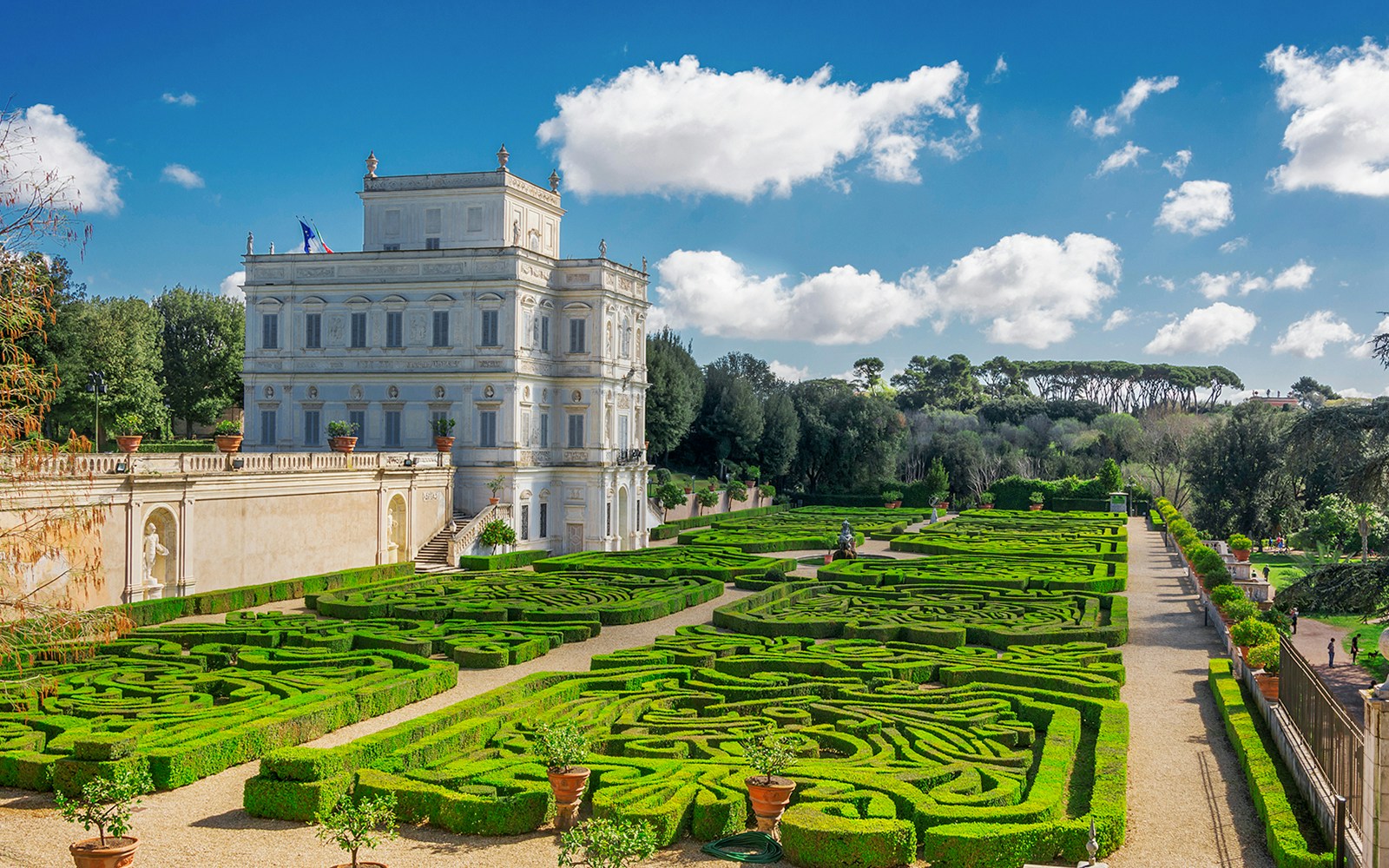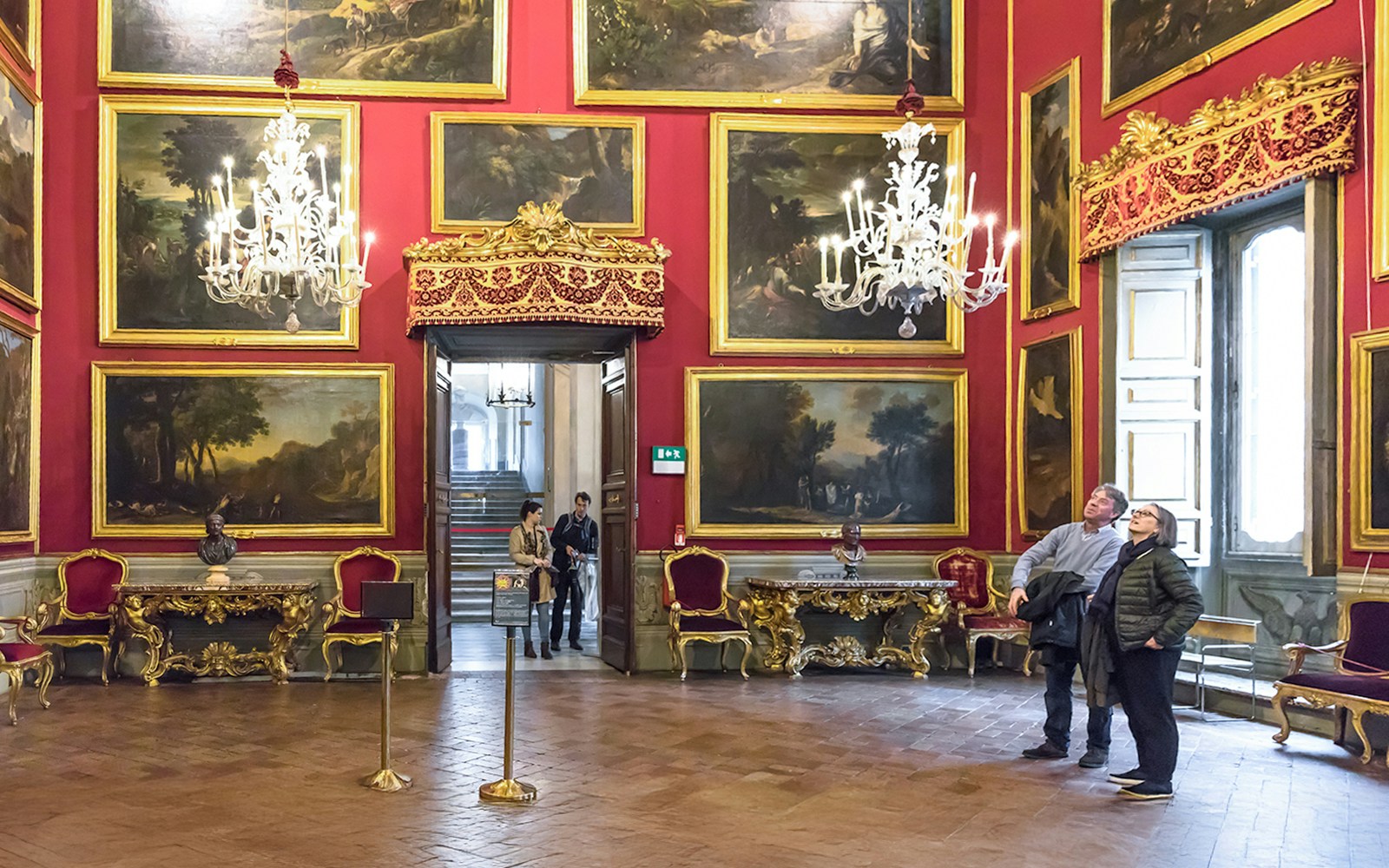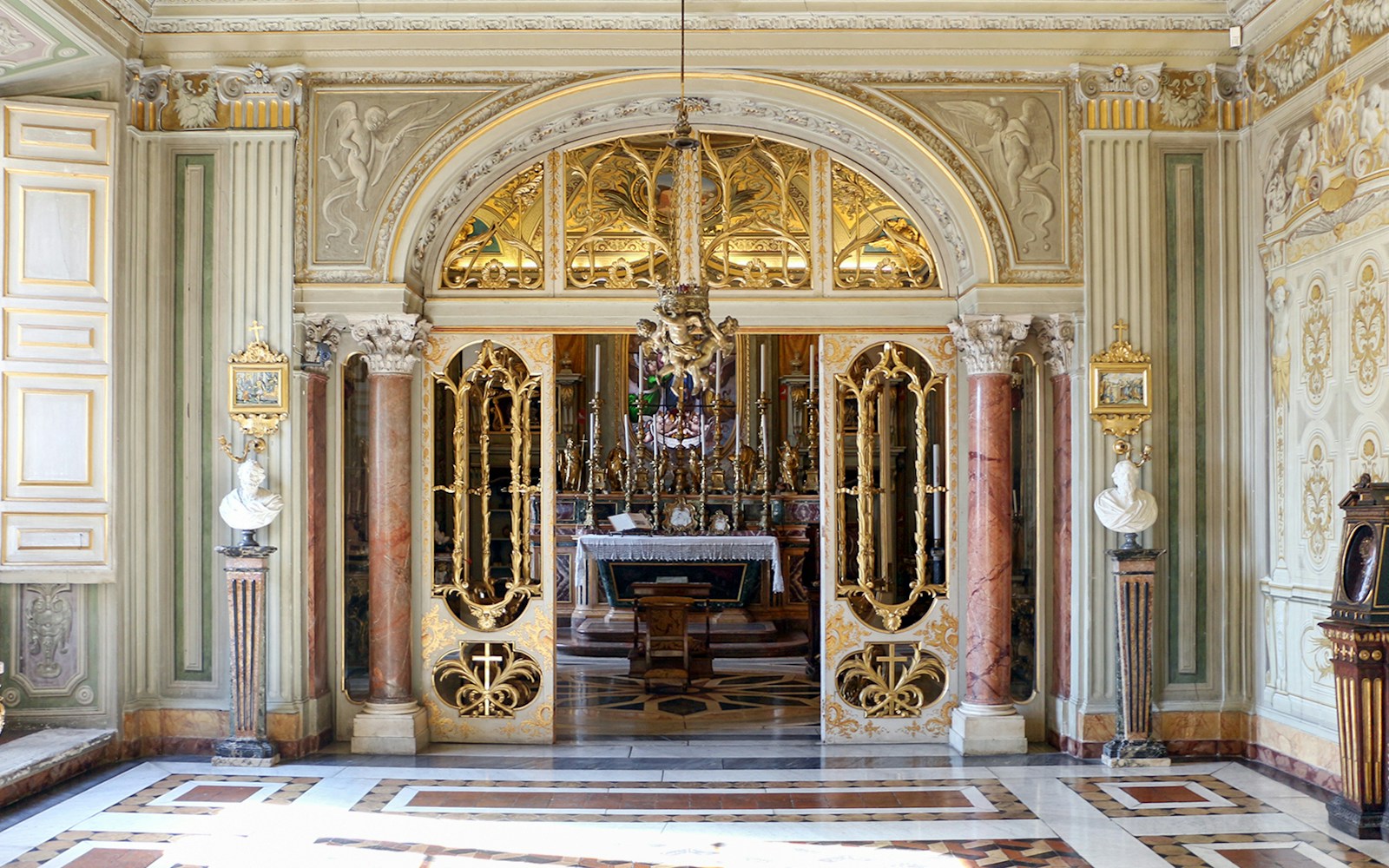The origins of the Doria Pamphilj Gallery are tied to a remarkable union of Italian noble families. Through marriage, the Doria, Pamphilj, Landi, and Aldobrandini lineages combined their fortunes and art collections. This powerful blend created a legacy that would shape the gallery’s future, making it a treasure trove of family history and culture.
An art gallery or an aristocratic palace?
The Doria Pamphilj Gallery is part of the enormous Palazzo Doria Pamphilj. This vast estate has served as both a private residence and a treasure-filled gallery, reflecting the power and lifestyle of Italy’s most influential noble families.
Splendid palace interiors
Find lavish Baroque and Rococo interiors: gilded ceilings, chandeliers, grand staircases, and ornate salons. Every corner is filled with antique furnishings, marble statues, and masterpieces by artists like Caravaggio, Titian, and Raphael.
The private chapel
The palace’s private chapel is a serene, sacred space, complete with elaborate frescoes and religious relics. It even houses the mummified remains of the family’s saint, blending spiritual devotion with the family’s rich heritage and traditions.
The Hall of Mirrors
The Hall of Mirrors dazzles with its sparkling chandeliers, gilded stucco, and mirrored walls. Inspired by Versailles, this grand gallery was designed for celebrations, reflecting light and luxury throughout the palace’s most glamorous events.
The Velázquez Cabinet
This intimate room is dedicated to Diego Velázquez’s famed Portrait of Pope Innocent X. The painting, considered the gallery’s masterpiece, hangs beside Gian Lorenzo Bernini’s marble bust of the same pope.
The Aldobrandini Hall
This elegant space showcases treasures from the Aldobrandini family, who merged with the Pamphilj line through marriage. It blends Roman antiquities with Renaissance masterpieces and features a striking double portrait whose subjects remain a mystery.
Exquisite frescoes
Throughout the palace, ceilings and walls are adorned with exquisite frescoes by artists like Aureliano Milani and Crescenzio Onofri. These frescoes add vibrant color, mythological themes, and a sense of grandeur, enriching the gallery’s opulent interiors.
Apartments and family portraits
The private apartments are lined with generations of family portraits, each telling a story of power, marriage, and legacy. These rooms, still partly lived in today, offer a glimpse into the personal world of the Doria Pamphilj dynasty.



